
Expedition blog
saturday July 17, 2010
 There is a striking contrast between the coastline and the archipelago's limestone islands, first the coastline is cover with huge peat bugs and swamps where rise here and there dark hills dress with deep green spruces.
These rocky outcrops are a part of the Canadian Shield which exposes the most oldest rocks of the earth, magma cooled more than 3 billion years ago.
There is a striking contrast between the coastline and the archipelago's limestone islands, first the coastline is cover with huge peat bugs and swamps where rise here and there dark hills dress with deep green spruces.
These rocky outcrops are a part of the Canadian Shield which exposes the most oldest rocks of the earth, magma cooled more than 3 billion years ago.
 Islands are much younger, the grey limestone which composes them dates from the beginning of life 450 million years ago.
Mainly constituted by organic matter deposited at the bottom of the water, these islands made little by little surface since the last glaciation, from 20 000 years to 2 500 years ago.
The rivers made by the melting glaciers who recovered the shore sculptured these surprising structures (sometimes called tea pots) which contain numerous fossils.
Islands are much younger, the grey limestone which composes them dates from the beginning of life 450 million years ago.
Mainly constituted by organic matter deposited at the bottom of the water, these islands made little by little surface since the last glaciation, from 20 000 years to 2 500 years ago.
The rivers made by the melting glaciers who recovered the shore sculptured these surprising structures (sometimes called tea pots) which contain numerous fossils.
We visited the eastern part of the archipelago and on the three visited islands, two showed monoliths: the island of Wreck of which we have made the round trip by boat and the Nue island on which we spent several hours, the following photos result all of Nue island visit :
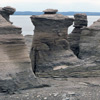
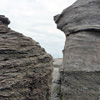
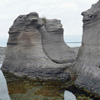
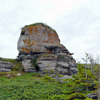
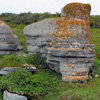
friday July 9, 2010
 A wonderful journey ! 900 km, 12 hours drive just to get there! But what a memorable expedition, first of all the services of the Loiselle family at Longue-Pointe-de-Mingan which assured our hosting and the transport by boat on islands were more than completes. Caravans are spacious, clean and well equipped, like central heating that was useful even in july !
A wonderful journey ! 900 km, 12 hours drive just to get there! But what a memorable expedition, first of all the services of the Loiselle family at Longue-Pointe-de-Mingan which assured our hosting and the transport by boat on islands were more than completes. Caravans are spacious, clean and well equipped, like central heating that was useful even in july !And what to say about the competence, the kindness and the skill of Captain Arnold of the Loup Marin, simply perfect !
I would also like to underline the excellent service received from the employees of Park Canada in the Longue-Pointe-de-Mingan Reception and Interpretation Centre. The kindness and skill was also there with in bonus a charming accent.
 From Sept-Iles the coast is magnificent, kilometers of sandy beaches, the sea air, the majestic, but cold gulf (the temperature of the water varies between 4 in 6 degrees Celsius, and this, winter as summer), and indeed the particular flora of which I shall write in detail in the third part of this article.
From Sept-Iles the coast is magnificent, kilometers of sandy beaches, the sea air, the majestic, but cold gulf (the temperature of the water varies between 4 in 6 degrees Celsius, and this, winter as summer), and indeed the particular flora of which I shall write in detail in the third part of this article.200 km farther, finally Minganie: beyond the 50th parallel, 1100 km from Montreal, near the coast in the Gulf of Saint-Lawrence (Moyenne Côte-Nord), are around thirty limestones islands as well as more than one thousand granitic islands with particular flora and fauna and the famous monoliths, it is the archipelago of Mingan. We are exhausted, starved, but the sea air revive us!
Enlarge map
Although my site deals with flora I cannot refrain, to conclude this first part, from putting photos of the fauna which we catch sight of. In order: a young Common Rorqual, an Atlantic Puffin, Arctic Terns, Harp seal, Razorbills and young Great Black-backed Gulls.
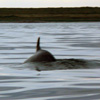
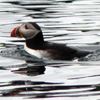
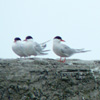
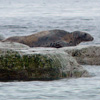
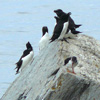

*Thanks to Aryzona for some photos of theses articles on Minganie.
tuesday July 13, 2010
Bonjour !!! Bel article qui m'invite à y allée :) et a y prendre une sniffer d'air du large !!!! D' y voir de si beau paysage m'éconnu de notre si belle province. j'ai hâte de lire la suite !!!
Carmen, Québec
sunday March 21, 2010
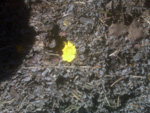 Yes, an early spring, so early that it surprised me. Indeed, I had no camera with me to capture the first flower of 2010 : a Colstfoot.
Yes, an early spring, so early that it surprised me. Indeed, I had no camera with me to capture the first flower of 2010 : a Colstfoot.
Usually Colsfoot blooms only by April 20th in Quebec. Most earlier that I had noticed was April 14th (2006). I was able anyway to immortalize this moment with my cell phone. The quality leaves much to be desired, but well it is anyhow exceptional!


